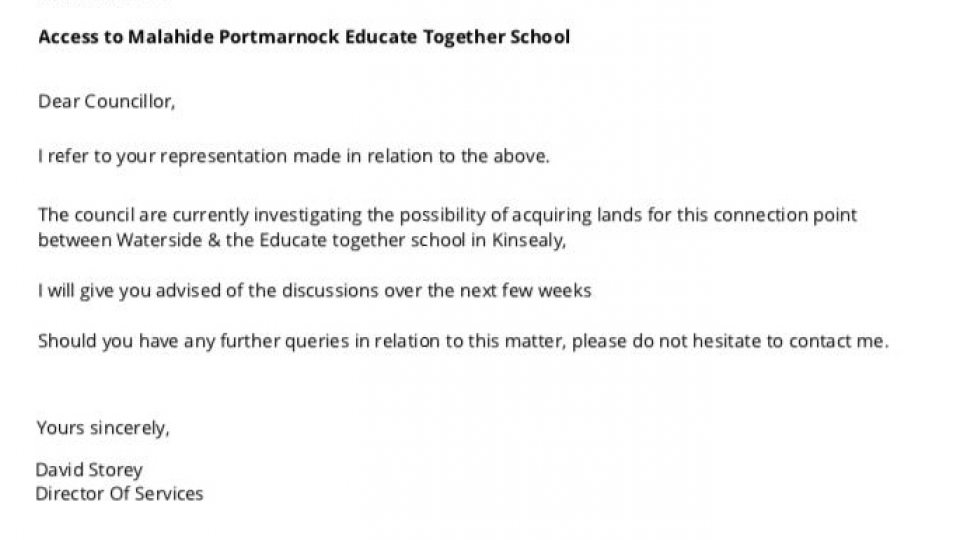Potential new Greenway link to Malahide-Portmarnock Educate together school
A new greenway link to the Malahide-Portmarnock Educate together school in Kinsealy Dublin 17 to the Waterside area is currently underway with Fingal County Council. In recent correspondence between Cllr Eoghan O’Brien and David Storey from the newly formed Active travel Department within Fingal County Council are in discussions to acquire lands so school kids can walk and cycle safely to school and shorten their commute times and not over reliant on car journeys. It is estimated that it could save up to 20 minutes for people travelling with this new route. Permeability is an important concept in active travel and enhances and increases the ability of people being able to cycle and walk to any location but especially schools. More details to follow.
Cllr David Healy has also asked questions on the issue back in September 2020. See motion attached below in PDF.
**Further information from the National Transport authority on permeability. **
The National Transport Authority has today published a best practice guide on providing for permeability in existing urban areas, and has circulated it to 140 planners and engineers in local and regional authorities nationwide. Promoting walking and cycling as modes of transport is a key objective of the National Transport Authority, particularly for shorter length journeys. Historically many urban areas in Ireland have been designed without recognition of the importance of walking and cycling, which has resulted in travel by these modes being inconvenient, circuitous, and in some cases less safe than they should be. In many locations, the preponderance of cul-de-sacs, and the lack of access links through estate boundaries, renders the walk or cycle to schools or shops significantly longer than the straight line distance and gives little choice to people other than the use of their car. This adds to local congestion, to the cost of people’s daily transport, to local air and noise pollution and it requires additional car parking at each destination. To compound all of these impacts, it also removes the potential for people to combine their trips to school, shops etc. with the health benefits of daily exercise.
In addition to developing larger transport projects, the Authority funds transport infrastructure measures which facilitate and promote walking and cycling. This funding programme builds upon work already being undertaken by local authorities aimed at addressing gaps in their transport networks. In many cases, these “gaps” comprise situations where demand for walking and cycling in towns and cities is not being met by the transport network. Locations where severance is “built-in” to the environment by high walls or cul-de-sacs, are common examples. The Authority encourages and financially supports the transformation of such neighbourhoods into permeable ones, where people can walk or cycle through areas safely and conveniently, and in a manner which confers a competitive advantage to these modes.
We are also aware of locations where perceived anti-social behaviour by a small number of people results in pressures to close local links that connect areas or act as direct routes to and from key destinations. The consequence of such link closures can be circuitous and long alternative routes for the local populace. It is evident that guidance on other possible approaches that might ultimately retain the relevant link would be of benefit.
As such, the Authority, in collaboration with South Dublin County Council and AECOM, has developed this policy guidance on how best to facilitate demand for walking and cycling in existing built-up areas. See the document here: Permeability: Best Practice Guide https://www.nationaltransport.ie/permeability-in-existing-urban-areas-be…
Help us do more for cycling in Dublin by becoming a member!

